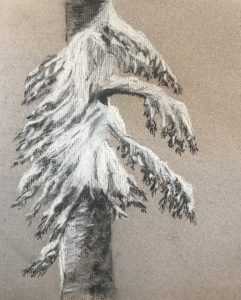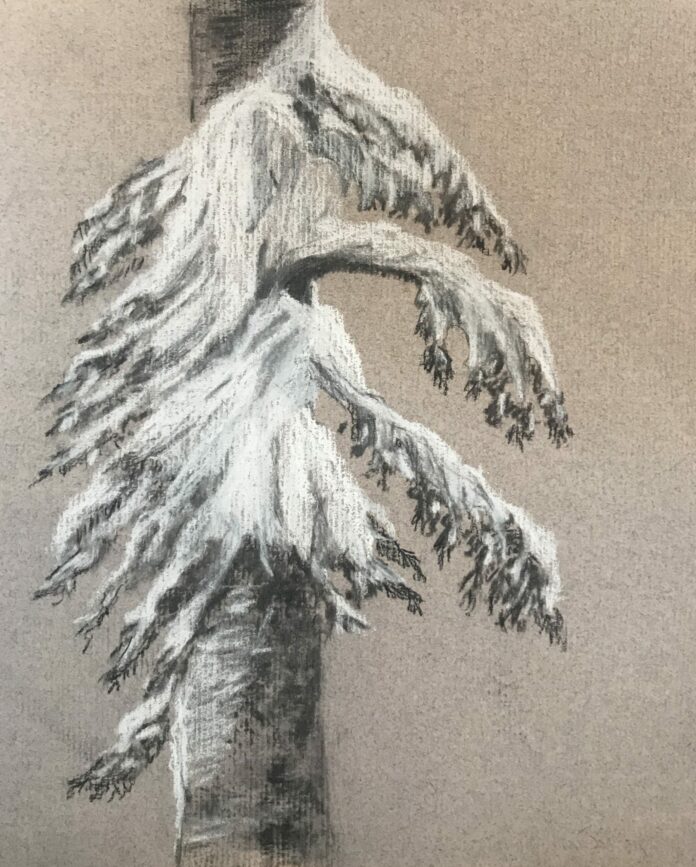BY LESLIE REGO

The American naturalist, Henry David Thoreau (1817-1862), wrote in his journal on December 26, 1853, “The effect of snow is to press down the forest, confound it with the grasses, and create a new surface to the earth above, shutting us in with it, and we go along somewhat like moles through our galleries.”
Two years later, on December 26, 1855, Thoreau penned in his journal, “The ice is from an eighth to a quarter of an inch thick about the twigs and pine needles. Their heads are bowed; their plumes and needles are stiff, as if preserved under glass for the inspection of posterity… their drooping boughs being wrapped about them like the folds of a cloak or a shawl. The crust is already strewn with bits of the green needles which have been broken off. Frequently the whole top stands up bare, while the middle and lower branches are drooping and massed together.”
Year after year Thoreau was besotted with the snowy landscape. Winter after winter he documented his surroundings. Thoreau continually created new sentences to illustrate the cold season, but often was convinced he fell hopelessly short in his descriptions. He loved the ice-encased trees and thought of them as crystal palaces. Snow looked like “bread that had spewed out and baked alongside the pan.” He believed the landscape looked like a white linen napkin “with many folds and dimples.” Snow that gathered on the ends of pine branches was similar to “fans or the webbed feet of birds.”
Thoreau’s descriptions flit through my mind as I sketch fallen snow. Instead of webbed feet, I think the snow-filled boughs are comparable to the claws on a dragon. Rather than bread spewing out of a pan, I like to imagine a snowy landscape resembling my sourdough that has climbed up and over its container and has descended down onto the counter, a series of lumps just like the clumps of snow that cascade after a storm. The indentations between the snow-covered pine needles are evocative of a series of fjords.
Images are powerful. They help to enliven our view of the world. I find it useful to employ a metaphor when I have trouble sketching a scene. I stretch my internal vocabulary to add spice to my external vision.
After 3,400 words attempting to describe a snowfall, Thoreau wrote, “I doubt if I can convey an idea of the appearance of the woods yesterday, as you stood in their midst and looked round on their boughs and twigs laden with snow.”
A winter landscape is magical. Maybe there will never be enough words or combinations of words to truly bring it alive!
Leslie Rego is an Idaho Press Club award-winning columnist, artist and Blaine County resident. To view more of Rego’s art, visit www.leslierego.com.



